While Jaipur is famous for its grand palaces, bustling bazaars, and vibrant festivals, the city also has a quieter, more hidden side. Beyond the well-known tourist attractions, Jaipur offers several offbeat places that reveal the city’s unique charm and cultural depth. Whether it’s a serene stepwell, an ancient temple, or a hidden gem tucked away in the outskirts, these offbeat spots in Jaipur offer a refreshing escape from the crowds. Here are offbeat places in Jaipur that promise a unique experience.
8 Offbeat Places In Jaipur
Explore a unique side of Rajasthan with our guide to the top 8 offbeat destinations in Jaipur.
1. Panna Meena Ka Kund
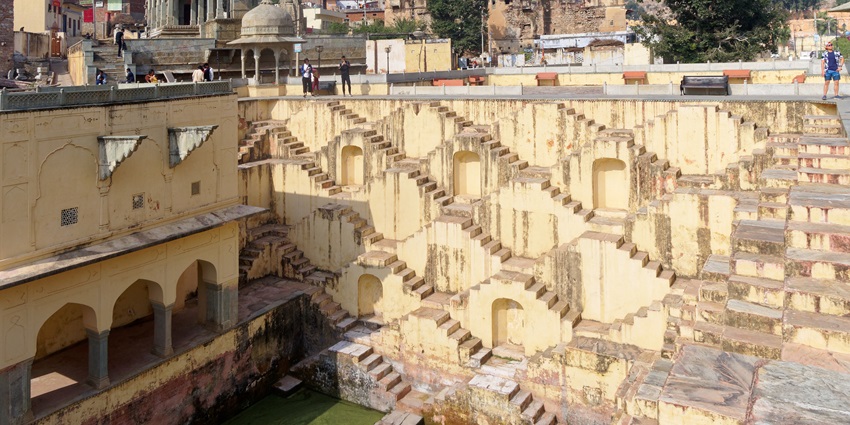
Photo: Jakub Hałun / Wikimedia Commons
Panna Meena Ka Kund is a stunning 16th-century stepwell located near Amer Fort. Unlike other touristy locations, this stepwell remains quiet, offering a peaceful retreat amidst its symmetrical steps and striking architecture. The stepwell was initially used for water conservation and served as a social gathering spot for locals. The geometrically patterned steps create an optical illusion, making it a photographer’s paradise. Its secluded nature and historical significance make Panna Meena Ka Kund a must-visit for those exploring Jaipur’s lesser-known gems.
Major Attractions: Stepwell architecture, peaceful surroundings
Best Time To Visit: October to March
Ideal Duration: 1 hour
Nearest Railway Station: Jaipur Junction
Suggested Read: Places Near Jaipur For Weekend
2. GaltaJi Temple
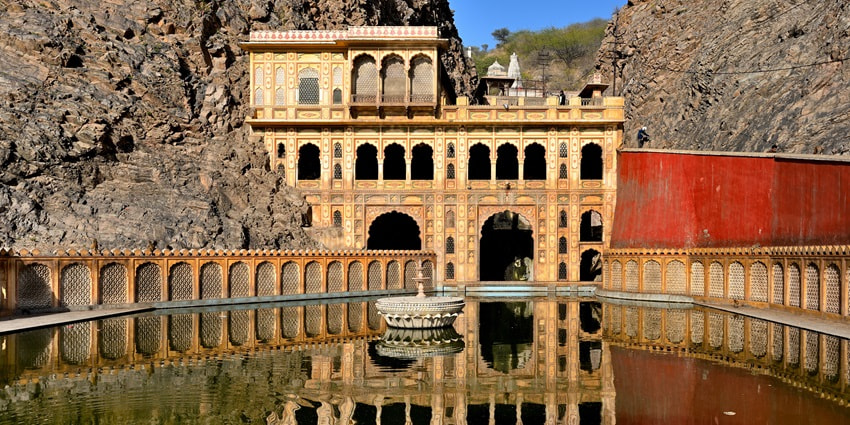
Photo: Sharvarism / Wikimedia Commons
GaltaJi Temple, also known as the Monkey Temple, is an ancient pilgrimage site located on the outskirts of Jaipur. Nestled in the Aravalli Hills, this temple complex is dedicated to Lord Hanuman and is home to hundreds of monkeys. The temple’s unique setting, with natural springs and sacred water tanks, attracts pilgrims and travellers. The main highlight is the “Galta Kund,” a natural water reservoir considered holy by Hindus. The panoramic views of Jaipur from the temple’s higher points add to its appeal. Unlike crowded city temples, Galta Ji offers a serene and spiritual experience.
Major Attractions: Galta Kund, Monkey sightings, panoramic views of Jaipur
Best Time To Visit: October to March
Ideal Duration: 2 – 3 hours
Nearest Railway Station: Jaipur Junction
3. Gaitore Ki Chhatriyan
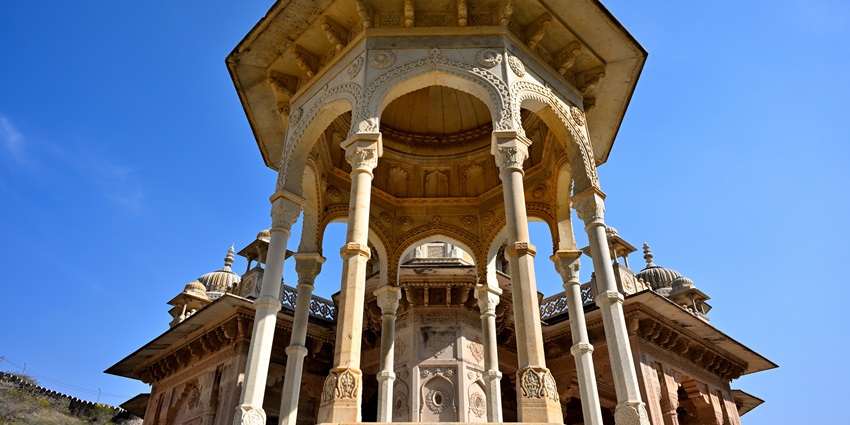
Photo: Sharvarism / Wikimedia Commons
Gaitore Ki Chhatriyan, located just a few kilometres from Jaipur, is the royal cremation ground of the Kachwaha dynasty. This offbeat site is known for its beautifully carved cenotaphs, which are dedicated to the Maharajas of Jaipur. Each cenotaph, or “chhatri,” is intricately designed with exquisite marble carvings, reflecting the artistic and architectural styles of the time. It is also an excellent spot for photography in Jaipur tourist places, with the backdrop of the Aravalli Hills.
Major Attractions: Royal cenotaphs, intricate marble carvings
Best Time To Visit: October to March
Ideal Duration: 1 – 2 hours
Nearest Railway Station: Jaipur Junction
Suggested Read: Places To Visit In Jaipur
4. Jawahar Kala Kendra
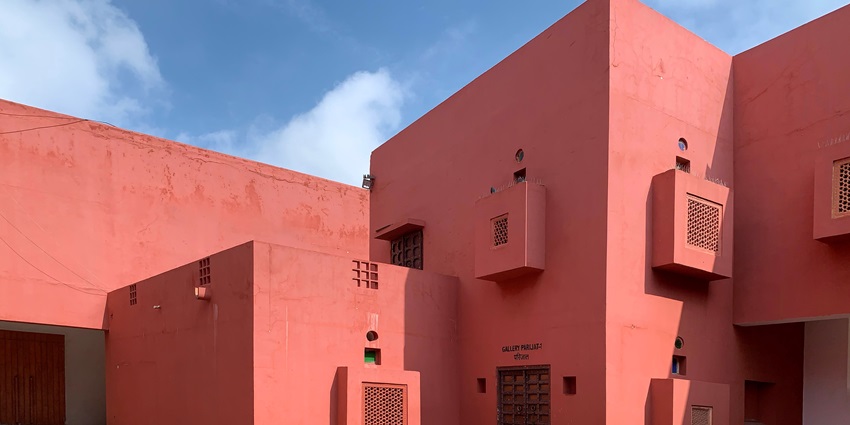
Photo: Chainwit. / Wikimedia Commons
Jawahar Kala Kendra is a cultural centre and arts complex located in Jaipur. Designed by the renowned Indian architect Charles Correa, this centre was established to preserve and promote Rajasthan’s art and culture. The architectural design of the complex is inspired by the traditional “Vastu Shastra” principles. Visitors can explore art galleries, attend theatre performances, and participate in workshops on various conventional arts and crafts. The centre also hosts several cultural events and festivals throughout the year, making it an ideal place for art lovers looking to explore the creative side of Jaipur.
Major Attractions: Art galleries, cultural performances, workshops
Best Time To Visit: Year-round
Ideal Duration: 2 – 3 hours
Nearest Railway Station: Jaipur Junction
5. Anokhi Museum Of Hand Printing
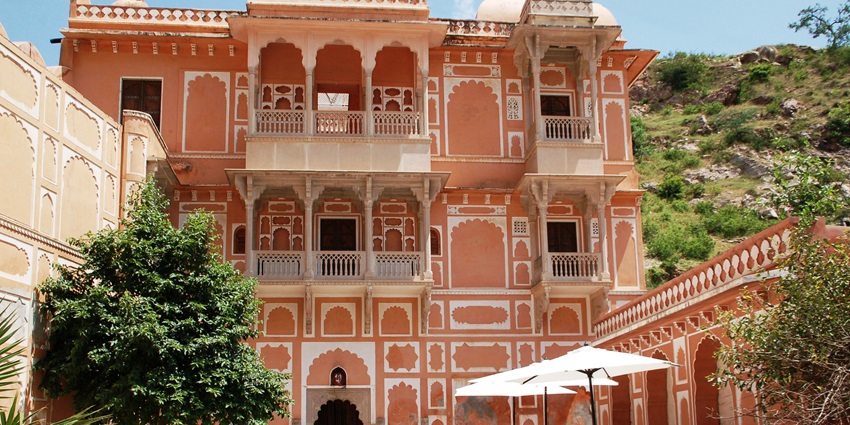
Photo: Ketayun, Katz / Wikimedia Commons
The Anokhi Museum of Hand Printing, located in the village of Amer, is dedicated to preserving the traditional craft of hand block printing. The museum is housed in a beautifully restored haveli and offers visitors an insight into the art of block printing, which has been practised in Rajasthan for centuries. The exhibits showcase various textiles, tools, and techniques used in the craft. Visitors can also participate in live demonstrations and workshops. This offbeat museum is an offbeat tourist attraction in Jaipur for its rich textile heritage.
Major Attractions: Block printing exhibits, live demonstrations, workshops
Best Time To Visit: October to March
Ideal Duration: 1 – 2 hours
Nearest Railway Station: Jaipur Junction
Suggested Read: Exploring Jaipur Museums
6. Nahargarh Biological Park
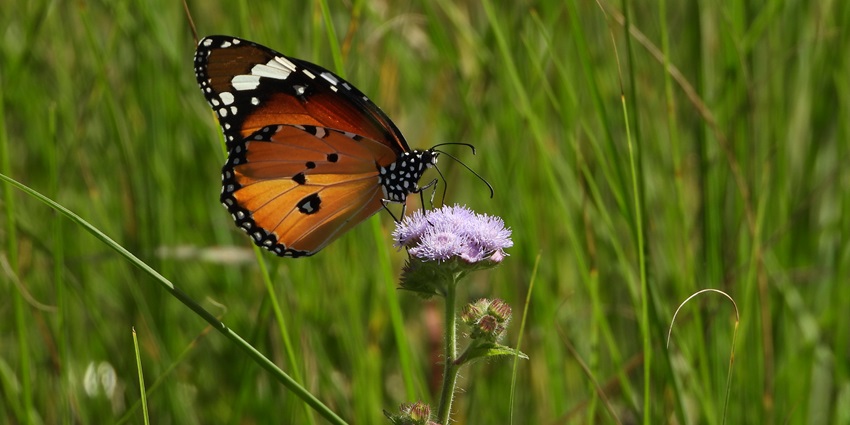
Photo: Gautamswati / Wikimedia Commons
Nahargarh Biological Park, located near Nahargarh Fort, is a lesser-known wildlife sanctuary that offers visitors a chance to explore Rajasthan’s natural beauty. The park is home to various animals, including tigers, leopards, deer, and sloth bears. It also serves as a birdwatcher’s paradise, with over 285 bird species recorded in the area. The park’s scenic location in the Aravalli Hills and its diverse flora and fauna make it an excellent destination for nature lovers looking for a quiet escape from the city.
Major Attractions: Wildlife safari, birdwatching, scenic views of the Aravalli Hills
Best Time To Visit: October to March
Ideal Duration: 2 – 3 hours
Nearest Railway Station: Jaipur Junction
7. Sisodia Rani Garden
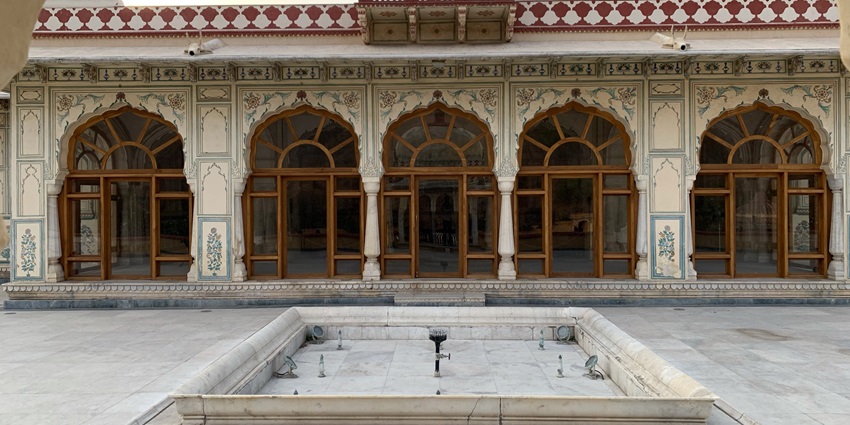
Photo: Slyronit / Wikimedia Commons
Sisodia Rani Garden is a beautiful, multi-tiered garden located on the outskirts of Jaipur. Built in 1728 by Maharaja Sawai Jai Singh II, the garden was dedicated to his queen, Sisodia Rani. The garden’s design blends Mughal and Rajput styles with lush greenery, fountains, water channels, and painted pavilions. The peaceful ambience and the garden’s historical significance make it a perfect place for a Jaipur trip, a stroll and a picnic away from the hustle of Jaipur’s busy streets.
Major Attractions: Mughal-Rajput architecture, fountains, murals
Best Time To Visit: October to March
Ideal Duration: 1 – 2 hours
Nearest Railway Station: Jaipur Junction
Suggested Read: Things To Do In Jaipur
8. Patrika Gate
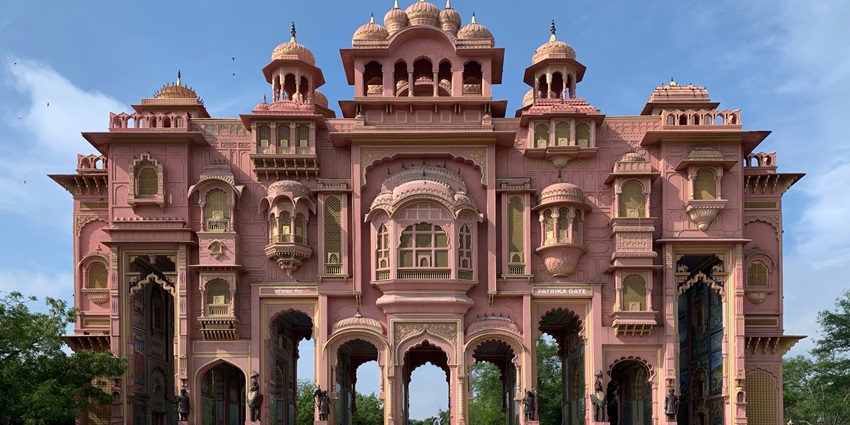
Photo: Chainwit./ Wikimedia Commons
Patrika Gate is a vibrant, beautifully adorned gateway symbolising the state’s rich culture and heritage. Its arches and columns showcase traditional Rajasthani designs, representing each state region. The vibrant colours and ornate detailing make it a feast for the eyes and a photographer’s paradise. Famous for its intricate architecture, colourful murals, and stunning arches, it is a popular Instagram spot.
Major Attractions: Detailed frescoes, vibrant murals, nearby Jawahar Circle Garden
Best Time To Visit: October to March
Ideal Trip Duration: 30 – 45 minutes
Nearest Railway Junction: Jaipur Junction
Other Factors To Consider
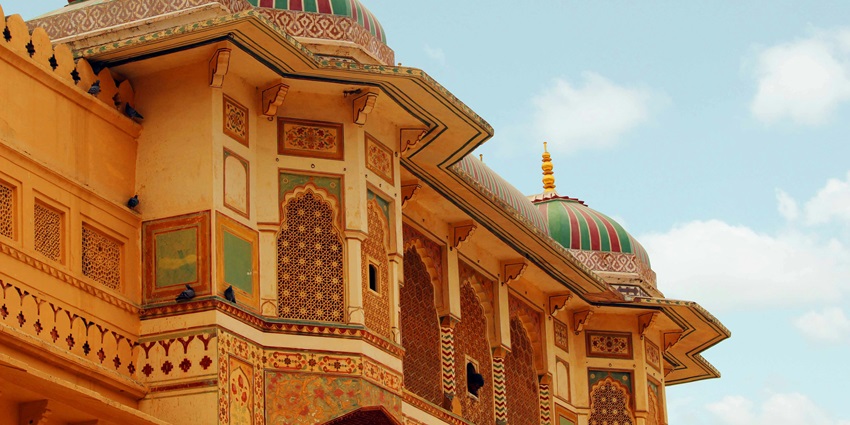
Photo: Ankush Rathi / Pexels / Image For Representation Only
Average Cost Of The Trip
A trip to Jaipur, including visits to major attractions like the Amber Fort, Hawa Mahal, and City Palace, typically ranges from ₹2,000 to ₹5,500 per person, depending on your choice of accommodation, dining, and activities. Budget travellers can spend less, while those opting for more luxurious experiences may pay more.
Tips For Travellers
- Visit the famous monuments early in the morning or late afternoon to avoid crowds and harsh sunlight.
- A guide can provide deeper insights into the history and architecture of places.
- Auto-rickshaws and taxis are widely available, but it’s better to negotiate fares in advance.
- Jaipur’s landmarks are relatively close, so plan your visits to cover multiple sites daily.
- Try Rajasthani dishes such as dal baati churma, laal maas, and ghewar at local eateries.
Suggested Read: Places To Visit Near Jaipur For A Serene Retreat In Rajasthan
Exploring these offbeat places in Jaipur offers a refreshing departure from the usual tourist trails. Whether it’s the quiet elegance of a stepwell, the rich artistry of a museum, or the untamed beauty of a wildlife sanctuary, these hidden gems promise to add a unique dimension to your Jaipur experience. Ready to uncover the lesser-known wonders of Jaipur? Plan your trip with TripXL and embark on an unforgettable journey through the Pink City’s offbeat treasures.
Cover Photo: Martijn Vonk / Unsplash


 WhatsApp
WhatsApp
 Twitter
Twitter









